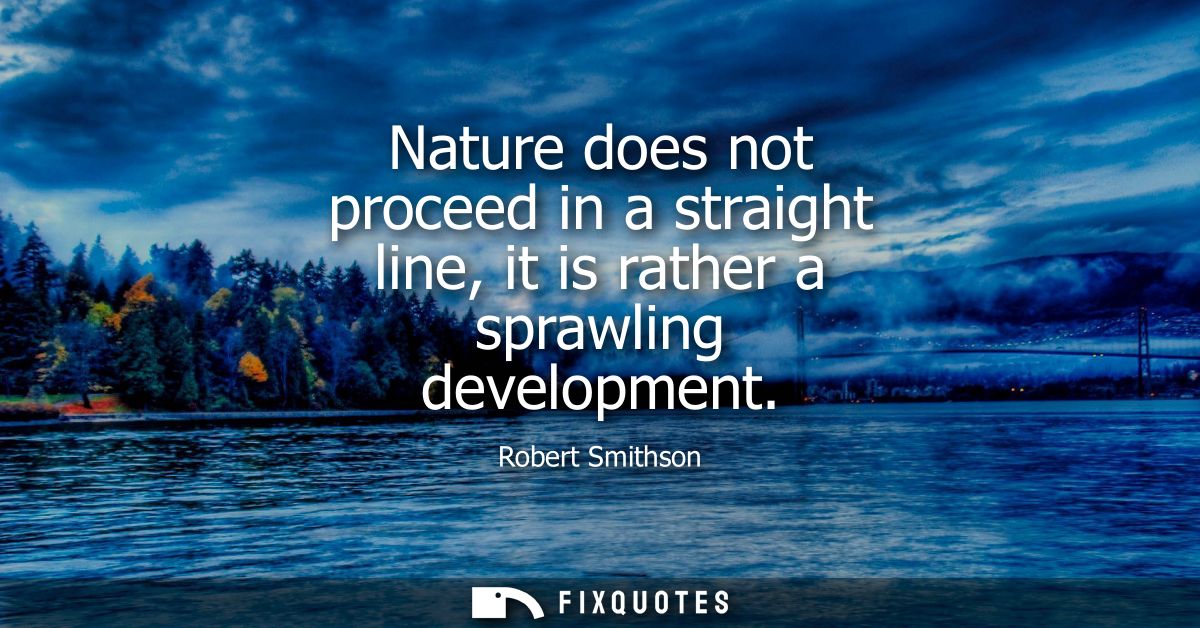"Nature does not proceed in a straight line, it is rather a sprawling development"
About this Quote
Robert Smithson’s observation that nature "does not proceed in a straight line, it is rather a sprawling development" invites reflection on the unpredictability and inherent complexity of natural processes. Nature resists simplicity and uniformity; its growth and transformations rarely follow linear, predictable paths. Instead, forests expand through networks of roots and branches that intertwine and diverge unpredictably. Rivers meander according to topography and obstacles, eroding new channels, splitting, sometimes looping back on themselves. Geological formations, plant growth, and animal behaviors defy strict patterns, instead manifesting as chaotic or intricate webs of interrelation.
Smithson’s statement reflects a broader philosophical understanding of the world, rejecting the notion of progress or evolution as a direct, goal-oriented advance. Human desire for order often leads to impositions of straight boundaries, roads, property lines, architecture, onto landscapes that are inherently meandering and unruly. Nature’s "sprawling development" implies an organic unfolding, where forms and systems develop in multifaceted ways, responding to countless influences and constantly readapting. Randomness, accident, decay, and regeneration are as integral as growth or construction.
In artistic practice, especially within Smithson’s own earthworks, this appreciation for the untidy and rambling quality of nature becomes central. Engaging with sprawling, uncontrolled phenomena means accepting uncertainty and impermanence. The entropic qualities of landscapes, erosion, sedimentation, proliferation, contradict the human impulse to control, categorize, and confine. Understanding that nature does not conform to linear progress broadens our awareness of creativity, both human and nonhuman, as an evolving, sometimes messy interplay of innumerable forces. There is beauty and meaning in the crooked, the unfinished, and the wild, challenging viewers and participants to reassess their relationship to the environment as something living and perpetually in flux rather than static or subservient to human intent.
More details
About the Author

